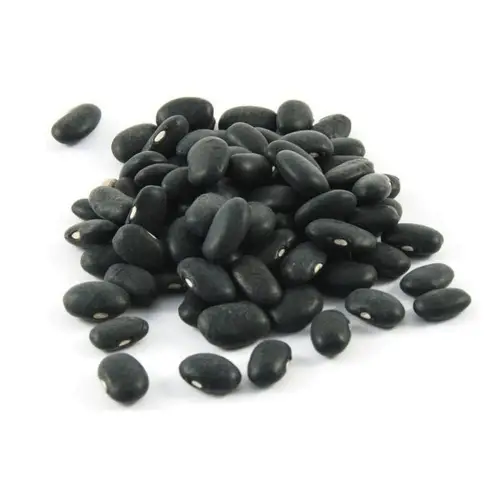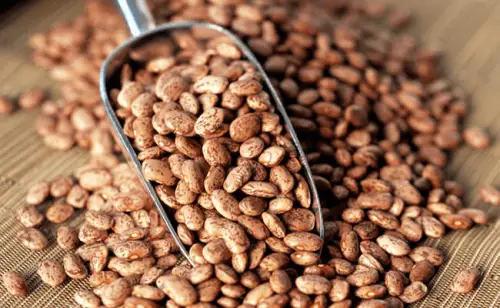Black beans and pinto beans are characterized by their unique flavor profile. Although they are both a staple ingredient in many types of cuisine, they are two completely different bean varieties. Continue reading to learn more!
Summary Table
| Black Beans | Pinto Beans |
| Originated in South and Central America | Originated in Peru |
| Black-colored beans | Tan-colored beans with red-brown splotches or streaks |
| Small to medium-sized | Larger |
| Do not change in color when cooked | Change in color when cooked |
| Texture is firm and sturdy | Texture is soft |
| Moisture and heat-resistant | Not moisture and heat resistant |
| Distinct for their hearty, rich flavor | Distinct for their creamy, nutty flavor |
| Higher in iron, potassium, vitamin B1, manganese, protein, phosphorus, magnesium, and fiber content | Lower in iron, potassium, vitamin B1, manganese, protein, phosphorus, magnesium, and fiber content |
| Lower in calories, carbohydrates, and starch | Higher in calories, carbohydrates, and starch |
| Dried variants should be stored in an airtight container at temperatures below 70 degrees Fahrenheit | Dried variants should be stored in an airtight container placed in a cool, dark place |
Definitions

Black beans, also called turtle beans, are oval-shaped beans popularly used in Mexican, Latin American and Caribbean cuisines.

Pinto beans are oval-shaped beans characterized by their red-brown splotches. They are commonly used in Mexican and American cuisines.
Black Beans vs Pinto Beans
They are both packed with nutrients and are both delicious, but it doesn’t mean that there is no difference between black beans and pinto beans. In fact, it is easy to distinguish between the two even at first glance since they also differ in appearance and texture.
Origins
Black beans and pinto beans are both varieties of Phaseolus vulgaris, which is an herbaceous plant. However, they don’t have the same origins. Black beans originated in South and Central America, while pinto beans were first discovered and used specifically in Peru.
Appearance
Even though black beans and pinto beans are both oval-shaped, they greatly vary in color and size. Black beans, as the name implies, are black-colored beans that are small or medium-sized. Their jet black color is further highlighted by a cream-colored center.
Pinto beans, on the other hand, are larger in both height and width. Their tan-colored exterior is covered by red-brown splotches or streaks that disappear as the beans are cooked. Unlike black beans, pinto beans change in appearance and color when placed under heat.
As their markings fade, the beans become solid tan or brownish in color.
Texture
The difference in the texture of black beans and pinto beans makes each of them ideal for specific cooking purposes. Between the two, black beans are firmer and sturdier, making them more capable of tolerating high temperatures without getting watery. Since black beans are more moisture and heat-resistant, they are the perfect bean variety for cooking soup and other dishes that require longer cooking time.
Pinto beans, by contrast, are soft beans that are vulnerable to moisture exposure. As the beans are cooked, they absorb moisture and get mushy or watery.
When cooked, the texture of pinto beans can be compared to a mashed potato, making these beans an ideal ingredient for creating a bean spread or a bean dip.
Flavor Profiles
Both these bean varieties perfectly pair up with a wide array of spices and herbs, but they do have differences in terms of flavor. Black beans have a hearty and rich flavor, which is quite grainy or crunchy. Pinto beans, by comparison, have a creamy and nutty taste.
Nutritional Value
While black beans and pinto beans are both nutrient-dense ingredients that are low in calories, there are still slight nutritional differences between the two. Black beans are more jam-packed with nutrients as they have a higher iron, potassium, vitamin B1, manganese, protein, phosphorus, magnesium, and fiber than pinto beans.
Additionally, between the two, black beans are lower in calories, carbohydrates, and starch.
Storage
Dried black beans are ideally stored in an airtight container at temperatures below 70 degrees Fahrenheit, while dried pinto beans should be stored in an airtight container, which is placed in a cool, dark place. Proper storage can extend the beans’ shelf life to 1 year.





